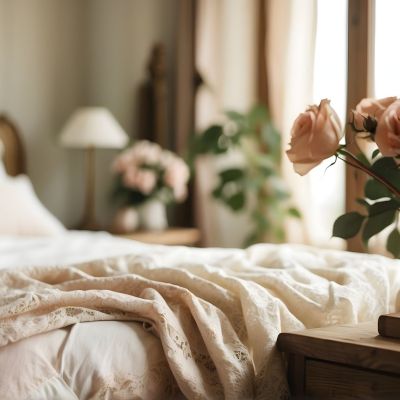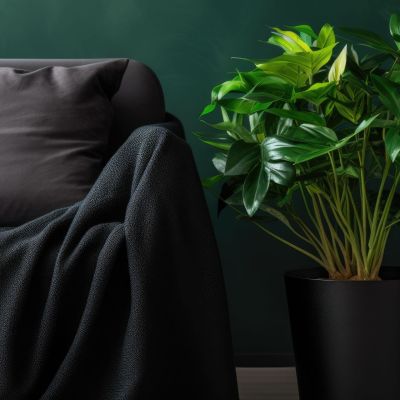Embracing Minimalism with a Pop of Color: For Those Who Love Vibrancy Over White Walls
Embracing Minimalism Without Giving Up Color: A Thoughtful Approach to Home Design
Minimalist homes are often associated with monochrome palettes, clean lines, and a sense of simplicity. However, the essence of minimalism isn’t about a stark, colorless environment; it’s about intentionality. In this article, we’ll explore how you can embrace minimalism while infusing your space with color—no bare white walls required.
While searching for images to accompany a recent article, I found myself disappointed by the typical photos of minimalist homes. Most were filled with bare white walls, sparse furniture, and little to no decoration. It’s no wonder that many people still find the idea of minimalism unappealing!
But when I looked around my own home—yes, a minimalist space—I noticed vibrant pops of color. While there are plenty of neutral tones, I’ve intentionally placed colorful accents that spark joy and interest: from colorful candles to my daughter’s artwork on the walls and the cheerful tea towels in the kitchen.
If you’re intrigued by the benefits of minimalism but hesitant about the sterile, monochrome aesthetic, this article is for you. We’ll show you how minimalism isn’t about eliminating color—it’s about thoughtfully integrating it into your home and life.
Minimalism: Intentionality, Not Just Design
Minimalism is often seen as a design style that embraces clean lines, simplicity, and neutral tones. But it’s also a lifestyle focused on intentionality: choosing less in both our possessions and our routines. Minimalism encourages us to make space for what truly matters, removing distractions and clutter in our homes and our lives.
However, minimalism as a lifestyle isn’t about stripping everything away and living as simply as possible. It’s about the intention behind your choices. When you get rid of things, it’s because they no longer serve a meaningful purpose in your life. Every item you keep—whether it’s a favorite piece of furniture or a beloved artwork—adds value, joy, or purpose.
Minimalists are aware of the trade-offs of every decision they make. Saying “yes” to one thing means saying “no” to something else. And that’s where the beauty of minimalism lies: in the freedom to choose only what brings joy and fulfillment.
The Colorful Side of Minimalism
So, how does all this relate to color in your home? The beauty of minimalism is that it’s about why you make choices, not what choices you make. If you love color, there’s no reason to feel limited by the neutral palettes often associated with minimalist design.
Color is powerful—it evokes emotions and sets the tone for a space. Red can inspire energy and passion, while blue brings calm and trust. Green connects us to nature, and yellow sparks creativity and happiness. These colors, when chosen thoughtfully, can transform your space into one that feels personal, vibrant, and intentional.
While many minimalist homes feature neutral tones, there’s no rule that says you can’t incorporate color. The key is being intentional with your choices. A carefully chosen shade can make a statement and create the exact vibe you want, whether it’s a deep burgundy wall or a calming sage green.
Here are some mindful ways to incorporate color into your minimalist space without overwhelming it:
-
Create a Feature Wall
Choose one wall in a room to paint in a different color or cover it with wallpaper. This provides an interesting focal point without dominating the entire room. -
Group Artwork Together
Instead of scattering artwork all over the room, group it together on one wall. Using matching frames can make the display feel cohesive and impactful. -
Use Odd Numbers
When placing accessories like candles, vases, or pictures, group them in odd numbers—like 3 or 5. This creates a balanced and pleasing visual effect. -
Pick Accent Colors
Consider how different colors make you feel in each room. For example, you might want calming tones in the bedroom, energizing hues in the living room, and creative colors in a home office. To create cohesion throughout your home, select one or two accent colors and carry them across different rooms. -
Add Pops of Color with Accessories
If you’re not ready to overhaul an entire room, start small. Brighten up your space with colorful towels, throw blankets, candles, picture frames, and rugs. Accessories are a great way to introduce color without the commitment of a major redesign. -
Use the 60-30-10 Rule
This interior design rule is a simple way to balance color in a room. Use your primary color for 60% of the space, a secondary color for 30%, and an accent color for the remaining 10%. This creates harmony and visual interest. -
Incorporate Plants
Plants are an excellent way to introduce color and life into your space. Their varying shades of green and unique leaf shapes add texture and vibrancy. Plus, they help purify the air and reduce stress! -
Swap Things Around
Don’t be afraid to rearrange furniture or move decor from room to room. This brings variety and new color combinations into your home, keeping things fresh and exciting. -
Embrace White Space
White space, or negative space, is essential in minimalist design. It allows your colorful elements to shine and prevents the room from feeling cluttered. A vibrant piece of art or a bold-colored wall looks even more striking against a clean, white backdrop. -
Experiment
Finally, don’t be afraid to play with color! It may take some trial and error to find the perfect shade for your walls or furniture. Test different tones, shades, and textures until you discover what feels right for your space.
Final Thoughts: Minimalism with Personality
Minimalism doesn’t require you to give up color or personality in your home. In fact, intentional use of color can enhance the minimalist ethos by bringing your space to life and making it uniquely yours. Minimalism is about being intentional with your choices—whether it’s the furniture you keep, the colors you choose, or the way you organize your life.
So, if you love color, go ahead and embrace it! Your minimalist home can be as vibrant, cozy, and full of life as you desire, as long as each choice is made with purpose and thoughtfulness. After all, minimalism isn’t about living without—it’s about living with intention.




